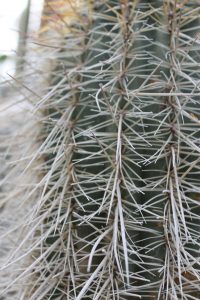Altered carbon: the catastrophe of coal
By Andy Winfield

In early November this year, myself and my wife went to the Welsh National Coal Museum also known as the Big Pit. It’s a great visit, looking at the working practices over the years of digging up this material that’s been locked underground since the Carboniferous period. Part of the experience is to go down into the mines, down in the lift, and look at the coal seams. The walls of glittery blackness were shimmering under the light of our head torches. We learned how coal is hard to get to, it requires a lot of ingenuity and effort to get it back to the surface; a surface that it hasn’t seen for many millions of years. Due to its importance in feeding the insatiable monster called progress, coal was a huge industry for many years; an industry we now know with certainty was a driver in changing the planet’s climate. But what is coal, and why is it so bad? (more…)
African keyhole gardens open the door for school gardening
By Helen Roberts
 |
| A keyhole garden in Rwanda. Photo courtesy of Send a Cow. |
Back in June, my son’s primary school, located in a small village on the edge of the Mendip Hills, built something called a keyhole garden in their grounds. Having no idea what a keyhole garden was, I thought I would offer up my services as a parent volunteer for the garden day. (more…)
Adapts shoots and leaves: the cactus.
By Andy Winfield

Cacti are interesting plants and a bit strange; some look like they could hoik themselves out of the ground and lumber around with spiny arms flailing, and others like they’ve just landed, and a door will slowly hiss open unleashing a thousand tiny aliens. They used to be something we only saw in Western movies, an indication of an arid landscape, usually accompanied by a lone rider with chapped lips shielding eyes from the sun. There’s been a resurgence in recent times, a lot of care and love is being heaped on these fascinating and unusual plants in houses around the country. It’s about time they received the attention they deserve; they’re one of the plant world’s many success stories, settling comfortably in the harshest environments with ingenious adaptations. (more…)

